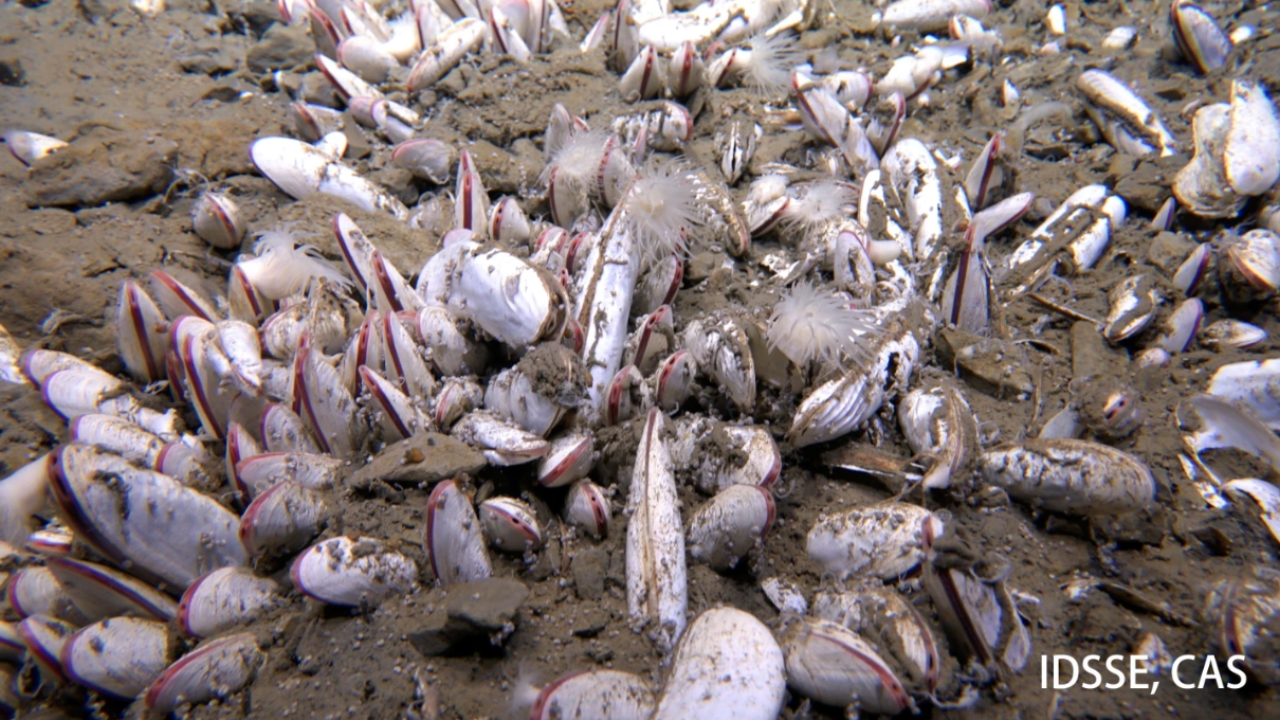
©(Institute of Deep-sea Science and Engineering, Chinese Academy of Sciences via AP)
Pre-reading questions:
I will read each question. Then, please answer them.
- What do you imagine the bottom of the ocean looks like?
- Why do you think people explore places that are hard to reach?
Vocabulary:
I will read the words, meanings, and sample sentences. Then, repeat after me.
- presence /PREZ-uhns/
- trench /trench/
- survive /ser-VAHYV/
- extreme /ik-STREEM/
- carbon /KAHR-buhn/
[noun] – the state of being in a particular place
The doctor confirmed the presence of bacteria in the water sample.
[noun] – a long, narrow, and deep cut in the ground or ocean floor
Researchers studied the trenches formed by tectonic activity on land.
[verb] – to continue to live or exist, especially in difficult conditions
Some plants can survive in very dry deserts.
[adjective] – very severe or intense; beyond the usual level
The hikers faced extreme weather conditions in the mountains.
[noun] – a chemical element found in all living things and fuels
Scientists study carbon levels to understand climate change.
Article reading:
Please read the whole article. Then, I will check your pronunciation and intonation.
A new study in the journal Nature confirms the presence of large sea animals in some of the deepest parts of the Pacific Ocean. Scientists from the Chinese and Russian Academies of Sciences explored the Kuril–Kamchatka and Aleutian trenches, located in the northwest Pacific Ocean. They used a special submersible vehicle to reach depths of over 31,000 feet (9.5 kilometers). In these places, researchers found tubeworms and mollusks living in very harsh conditions—where the water is extremely cold, the pressure is strong, and there is no sunlight. These areas were once thought to be nearly impossible for larger animals to survive. The results support earlier ideas that life can exist at such extreme depths.
Experts believe these deep-sea animals survive by using a process called chemosynthesis. Microbes living in the trenches change carbon into energy-rich chemicals. These chemicals are then used as food or shared with other animals in a close relationship. This way of living is different from what scientists expected. Marine biologist Julie Huber said that the types of animals found in these places were not known before because the area was so hard to explore. The discovery may help future studies of deep-sea life and could lead scientists to search for more unknown ocean ecosystems.
Experts believe these deep-sea animals survive by using a process called chemosynthesis. Microbes living in the trenches change carbon into energy-rich chemicals. These chemicals are then used as food or shared with other animals in a close relationship. This way of living is different from what scientists expected. Marine biologist Julie Huber said that the types of animals found in these places were not known before because the area was so hard to explore. The discovery may help future studies of deep-sea life and could lead scientists to search for more unknown ocean ecosystems.
Comprehension questions
I will read each question. Then, please answer them based on the article.
- What special machine did the scientists use?
- How deep did the scientists go under the sea?
- What animals did the scientists find in the deep sea?
- What are the conditions like in the deep ocean?
- Why didn’t scientists know about these animals before?
Discussion questions
I will read each question. Then, please answer them.
- Have you ever visited an aquarium or seen sea animals? If so, which sea animal did you like the most? If not, what would you like to see or learn if you visited an aquarium?
- Have you seen a movie or video about the deep ocean? If yes, what did you find interesting? If not, what kind of sea movie would you like to watch?
- Do you agree that finding new animals in the deep sea is important?
- Why is it difficult for people to explore the very deep parts of the sea?
- What other places on Earth do you think are hard to explore? Why?